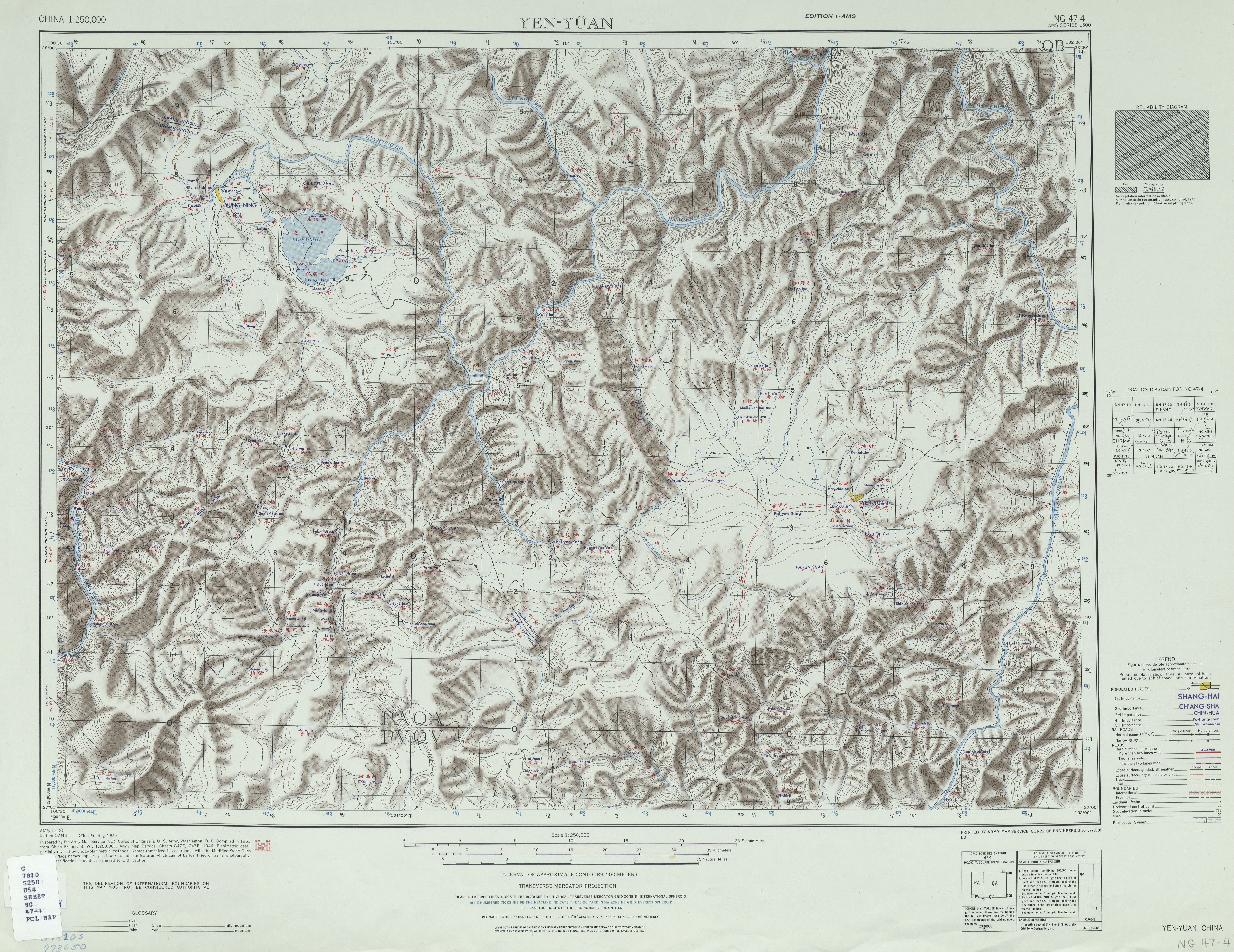|
Yanyuan County
Yanyuan County ( zh, s=盐源县, p=Yányuán Xiàn; ''yiep yuop xiep'', also ''ce mo xiep'') is a county in Liangshan Prefecture, Sichuan Province, China, bordering Yunnan province to the west. The county is located in Sichuan's rugged Hengduan Mountains in southwest Sichuan, but the county seat of Yanjing (盐井) is situated in an unusually flat basin with a diameter. Yanjing, as the county seat, is usually referred to as Yanyuan. History Yanyuan County was originally inhabited by the Yi people, but has since been incorporated into Han Chinese culture. The region has long been a source of salt for the Chinese and the name Yanyuan () literally means "Salt source". Until recently, Yanyuan was poorly connected with the rest of China by road. In the 2010s, a new tunnel was built through the mountains east of Yanyuan to connect the county with the prefecture capital of Xichang. Administrative divisions Yanyuan County comprises 1 subdistrict, 17 towns, 5 townships and 1 e ... [...More Info...] [...Related Items...] OR: [Wikipedia] [Google] [Baidu] |
Postal Code Of China
Postal codes in the China, People's Republic of China () are postal codes used by China Post for the delivery of letters and goods within mainland China. China Post uses a six-digit all-numerical system with four tiers: the first tier, composed of the first two digits, show the provinces of China, province, province-equivalent direct-controlled municipalities of China, municipality, or autonomous regions of China, autonomous region; the second tier, composed of the third digit, shows the postal zone within the province, municipality or autonomous region; the fourth digit serves as the third tier, which shows the postal office within prefectures of the People's Republic of China, prefectures or prefecture-level city, prefecture-level cities; the last two digits are the fourth tier, which indicates the specific mailing area for delivery. The range 000000–009999 was originally marked for Taiwan (The Republic of China) but is not used because it not under the control of the People' ... [...More Info...] [...Related Items...] OR: [Wikipedia] [Google] [Baidu] |
Subdistricts Of China
A subdistrict ( zh, c= / , p=jiēdào / jiē, l=streets and avenues / streets) is one of the smaller administrative divisions of China. It is a form of township-level division which is typically part of a larger urban area, as opposed to a discrete town (zhèn, 镇) surrounded by rural areas, or a rural township (xiāng, 乡). In general, urban areas are divided into subdistricts and a subdistrict is sub-divided into several residential communities or neighbourhood A neighbourhood (Commonwealth English) or neighborhood (American English) is a geographically localized community within a larger town, city, suburb or rural area, sometimes consisting of a single street and the buildings lining it. Neighbourh ...s as well as into villagers' groups (居民区/居住区, 小区/社区, 村民小组). The subdistrict's administrative agency is the subdistrict office ( zh, s=街道办事处, p=jīedào bànshìchù)"【街道办事处】 jiēdào bànshìchù 市辖区、不 ... [...More Info...] [...Related Items...] OR: [Wikipedia] [Google] [Baidu] |
Administrative Division Codes Of The People's Republic Of China
The administrative division codes of the People's Republic of China identify the administrative divisions of China at county level and above. They are published by the National Bureau of Statistics of China with the latest version issued on September 30, 2015. Coding scheme Reading from left to right, administrative division codes contain the following information: * The first and second digits identify the highest level administrative division, which may be a province, autonomous region, municipality or Special Administrative Region (SAR). * Digits three and four show summary data for the associated prefecture-level city, prefecture (地区 ''dìqū''), autonomous prefecture, Mongolian league, municipal city district or county. Codes 01 – 20 and 51 – 70 identify provincial level cities, codes 21 – 50 represent prefectures, autonomous prefectures and Mongolian leagues. *The fifth and sixth digits represent the county-level division – city district, county-level ci ... [...More Info...] [...Related Items...] OR: [Wikipedia] [Google] [Baidu] |
Yi Script
The Yi scripts (; ) are two scripts used to write the Yi languages; Classical Yi (an ideogram script), and the later Yi syllabary. The script is historically known in Chinese as ''Cuan Wen'' () or ''Wei Shu'' () and various other names (), among them "tadpole writing" (). This is to be distinguished from romanized Yi (彝文羅馬拼音 ''Yíwén Luómǎ pīnyīn'') which was a system (or systems) invented by missionaries and intermittently used afterwards by some government institutions (and still used outside Sichuan province for non-Nuosu Yi languages, but adapted from the standard Han Pinyin system and used to romanize another syllabary based on a subset of simplified Han ideograms). There was also the alphasyllabary (or abugida) devised by Sam Pollard (missionary), Sam Pollard, the Pollard script for the Miao language spoken in Yunnan province, which he adapted for the Nasu language as well. Present day traditional Yi writing can be sub-divided into five main varieties (Hu� ... [...More Info...] [...Related Items...] OR: [Wikipedia] [Google] [Baidu] |

